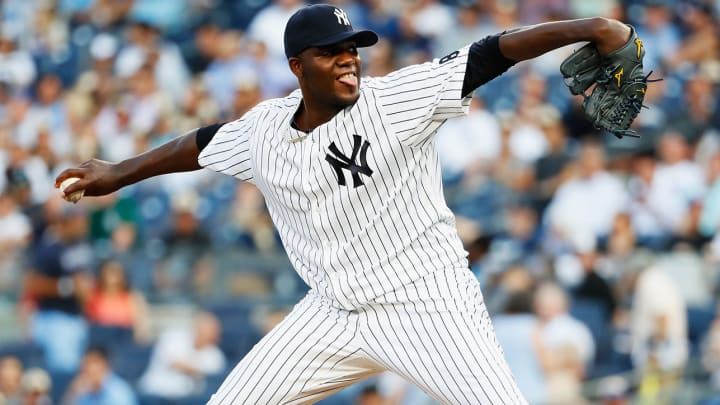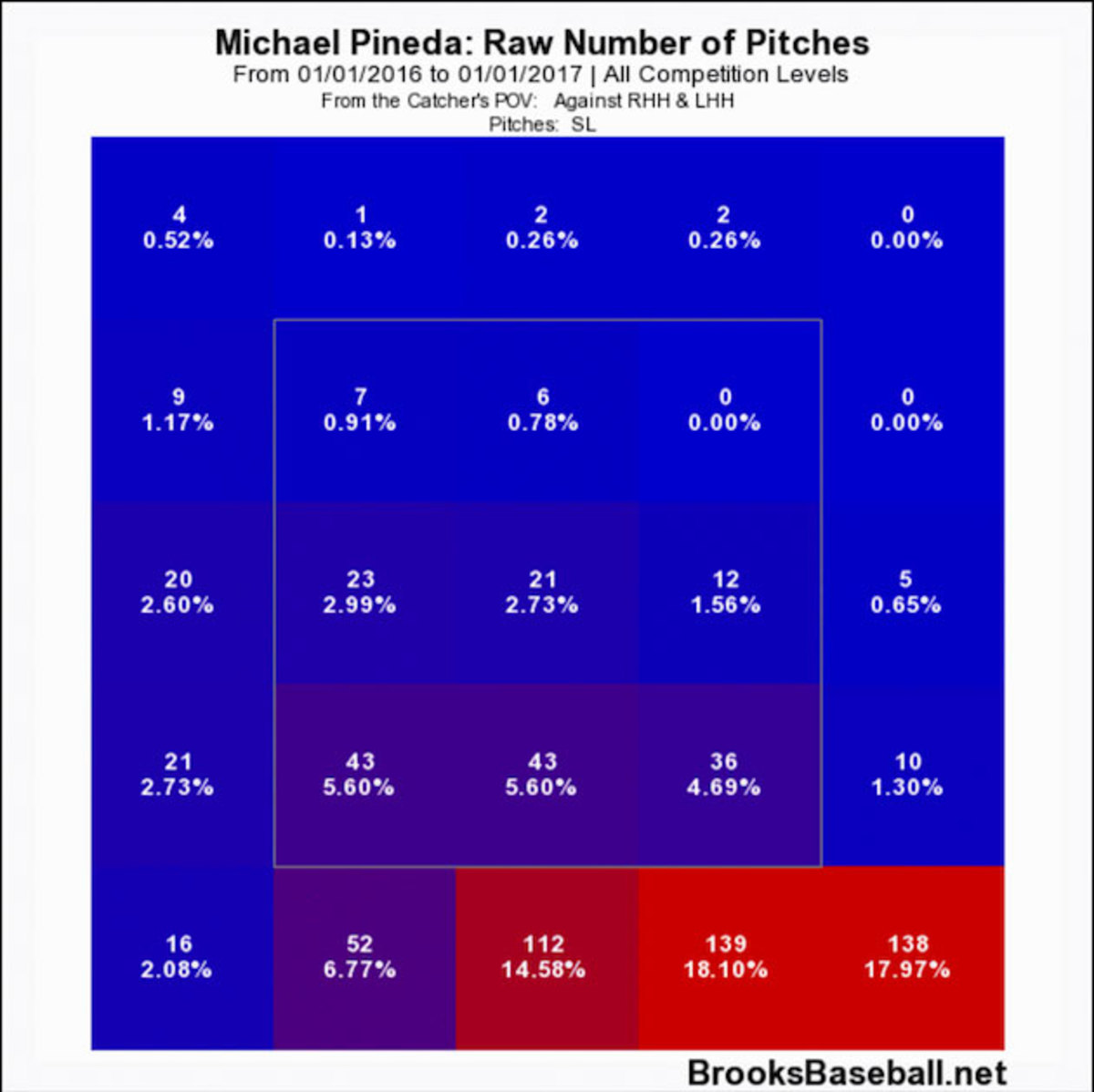Michael Pineda's slider proves he's been better than his numbers suggest

Five pitchers in the majors this season have a whiff rate greater than 14% and are striking out more than 10 batters per nine innings. Four of those names won’t surprise you one bit: Clayton Kershaw (16.1% whiff rate, 10.79 strikeouts per nine), Max Scherzer (15.2%, 11.5), Noah Syndergaard (15%, 10.99) and Jose Fernandez (14.8%, 13.05). Scherzer and Fernandez are first and second in total strikeouts, and injury is the only factor preventing Kershaw and Syndergaard from joining them at the very top of the leaderboard.
You might think you know who the fifth pitcher in this club is, but it’s not quite so obvious. It isn’t Stephen Strasburg, Madison Bumgarner or even Danny Salazar, who all have a strikeout-per-nine rate north of 10 but fall short in the whiff-rate department. The fifth pitcher is Michael Pineda, and it's the best evidence that the Yankees' righty has been much better than his cosmetic stats suggest.
Despite a 5.00 ERA and 1.33 WHIP, Pineda sports a 14.2% whiff rate and 10.72 strikeout-per-nine rate, ranking fifth and eighth, respectively, in those metrics. He has been much better since the start of June, outside of a two-start rough patch in which he allowed 10 runs in 11 innings in losses to the White Sox and Red Sox. Still, even including those outings, he has a 3.30 ERA, 1.05 WHIP and 76 strikeouts in 60 innings in June and July combined.
Pineda’s slider is largely responsible for his gaudy strikeout numbers. The pitch has a 25.5% swing-and-miss rate and accounts for more than two-thirds of Pineda’s swinging strikes. He only throws three pitches—a four-seam fastball and changeup, in addition to the slider—more than 8% of the time, and neither of the other two move the needle very much: Pineda’s four-seamer has a whiff rate of 7.5%, and his changeup checks in with a 6.9% whiff rate.
To be fair, a 7.5% swinging-strike rate on a four-seamer isn’t bad at all. Scherzer, who likely has the most feared righthanded four-seam fastball in the game today, has a comically high whiff rate of 13.5% with the pitch, but Fernandez is at 10.5, and Syndergaard sits at an even 10. Pineda doesn’t throw nearly as hard as those three and is in fine company with his four-seam whiff rate. He is, however, in elite company with the slider.
A 25.5% whiff rate with the slider is impressive enough, but it doesn’t tell the whole story. Whiff rate takes into account all pitches, not just ones the batter swings at. You take empty swings and divide that by total pitches to calculate whiff rate. To get an even better picture of a pitch’s performance, you want to take that in conjunction with whiffs per swing, and that’s where Pineda elevates to another level.
Hitters have come up empty 46.6% of the time when they’ve swung at Pineda’s slider. That’s good for fourth in the majors behind Nick Tropeano (seriously), Syndergaard and Corey Kluber. Pineda is one of 15 pitchers in the league with a slider whiff per swing ratio of 40% or better, with big names like Scherzer and Kershaw below him on the list.
The whiff-per-swing accomplishments do not stop there.
Pineda has thrown his slider 736 times this year. Kershaw has thrown the second-most sliders among the 15 pitchers with a 40% whiff per swing rate or better with the pitch, but he has thrown nearly 200 fewer than Pineda this season. On average, the 14 others have thrown 413.6 sliders—just 56.2% of Pineda’s total.
Generally, the more data points in a sample, the less likely you are to find an outlier. More inputs typically will bring the sample back toward the mean. That isn’t the case with Pineda’s slider. He throws the pitch more than any other pitcher who uses it as a dominant out-pitch, and he doesn’t lose any of the effectiveness despite all that volume. That is the true mark of dominance.
What’s so great about Pineda’s slider is its versatility. He can use it in any count to both righties and lefties. He can throw it out of the zone, and it’s filthy enough for hitters to chase, or he can keep it in the zone to get a called strike. The last point is wonderfully illustrated by his zone profile for the pitch, courtesy of Brooks Baseball.

Like most pitchers, the largest share of Pineda’s sliders is down and out of the zone. The 15.9% he throws right at the knees, however, is noteworthy. It’s hard to keep the slider in the strike zone but low enough that it isn’t begging to be hit out of the park. Pineda has found a way to do that consistently. Throwing 15.9% of your sliders at the very bottom of the strike zone isn’t a fluke; this is a skill that Pineda has mastered.
Pineda feels free to break out the slider in all situations, and that makes it hard to pin down when it’s coming, even though he throws it 37.6% of the time. Here he is using it as a first pitch to righty Brian Dozier leading off an inning.
Here Pineda is in essentially a polar opposite scenario, facing lefty Ryan Flaherty with the bases loaded and a 2–2 count, and going right back to his favorite pitch.
Here’s Pineda getting Ian Desmond to chase, followed by him forcing Kevin Kiermaier to offer at a nasty slider that stays in the zone.
Finally, here he is freezing Edwin Encarnacion for a called third strike.
Pineda struggled mightily at the beginning of the season, but he is once again trending toward the front of the rotation, a place he might already be if not for injuries early in his career. Thanks to one of the best sliders in the game, the semi-rebuilding Yankees already have a key piece in their rotation.
